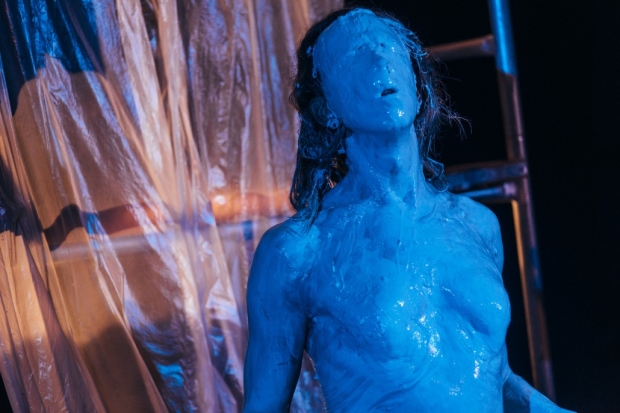Rituals for Change (Brighton Dome)
Emma Frankland and Abby Butcher’s production explores gender identity and the politics of transition

In the media the word ‘trans’ can seem so definite: a concrete term, a fixed label. Emma Frankland and Abby Butcher’s Rituals for Change reminds us that it’s a process – just like life itself. To transition is to change, but change means many things. Some are instantaneous; others, infinitesimal.
Frankland is at the start of her transition – five years of oestrogen pills and procedures – but she is also 35 years into it. "If I cut this finger off," she says, her wrist tied down, an axe hovering above, "there would be a moment of change." What if, however, that change was always bound to happen? If her whole life had been building up to it? She lists her beginnings: the first pill, the first inkling, the first uncertain Google search. "At what point do you stop being one thing and become the other?"
Frankland and Butcher’s last collaboration confronted the inadequacy of language around the trans experience. What makes Rituals for Change so touching, even if its writing sometimes seems portentous, is its determined precision. Everything aims to communicate, to really communicate, that experience as exactly as possible. Each action is potent; each line of text, absolutely meant.
It’s a process of a piece – all performance is – that transforms its stage as it goes. Frankland starts by chopping wood, moving earth, locking a scaffold together. She ends lighting candles in china clay pots. Over an hour, something recognisably masculine is made recognisably feminine. In some ways, it’s unfashionable, placing stock in materials – metal, clay, earth – like the Sixties never stopped. Yet, far from seeming old-hat, that mode is both necessary and eloquent. This stuff, like our bodies, is malleable and tangible.
There is one extraordinary sequence. Frankland covers herself in clay, scooping handfuls of wet grey over her torso, chest and face. It is many things at once: an attempt to reshape the body, but also to take a cast of it, to fix this point in the process into something set. It’s a beauty regime, but, as lumps form on the face, one that makes Frankland look elephantine and freakish – a reflection of the looks she has started to attract. The clay is a chrysalis in which to change, and the change itself. It makes the body gender neutral and indeterminate. Surrounded by handmade pots, Frankland fits in with them. She is making herself, as she made them. We all are.
There’s huge vulnerability here: Frankland puts herself out there, partly to communicate to others, partly to testify to herself. She allows herself and her body to be itself: both strong and male, delicate and female; a thing that can do and be done to. She is in-between, both and neither. A list of things she’ll lose – physical strength, tautness – makes the show a measuring stick as well as a letting go. How long will she be able to lift scaffolding like this? Or to chop wood with such force? The rituals also urge that process on: like a rain dance brings rain or communion, respite.
This is an insightful hour, one that strives so hard to convey personal experience that it transforms not just itself, but our understanding and attitude. Brave, tender and brilliant.
For future performances of Rituals for Change, visit www.notyetarobot.co.uk












